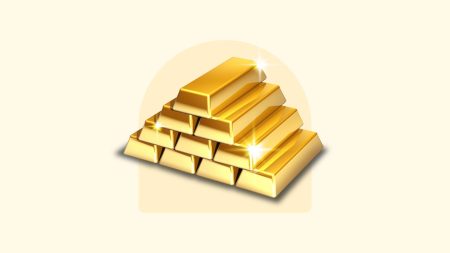As the Federal Reserve hiked interest rates to combat high inflation, investors have flocked to money market funds which offer returns north of 5 percent. Money market funds’ net assets reached $6.4 trillion in 2023, with investors pouring a record $1.2 trillion into the funds during the year, according to the U.S. Treasury Department’s Office of Financial Research.
Current money market fund yields are attractive, but high rates on cash-like investments may not last as the Fed prepares to cut rates later this year. Here’s how investors can prepare for the potential shift and where they may want to put their money instead.
What are money market funds?
Money market funds are offered by banks, brokerage firms or fund companies as a relatively low risk investment that provides current income to its fundholders. The funds invest in short-term securities that generate income for the fund.
Money market funds come in different forms:
- Prime funds hold short-term securities issued by companies or governments.
- Tax-exempt funds hold municipal bonds that are exempt from federal income taxes and in some cases state taxes.
- Government and treasury funds hold short-term securities that are backed by the government, such as U.S. Treasury bills.
Money market funds give investors a low risk way to earn a return on their short-term holdings such as cash. An investor may use a money market fund for their emergency fund or to hold cash they may need in the near future. The interest rates available through money market funds are highly sensitive to the Fed Funds rate, which is set by the Fed.
Money market funds and reinvestment risk
Investors can still earn yields above 5 percent from the best money market funds, but that may not last much longer. The Fed is expected to cut interest rates at its September meeting, as inflation moves closer to its long-term target and the central bank tries to navigate a soft landing for the economy. More rate cuts are expected in 2025.
As the Fed begins to cut rates, the yields available on short-term securities that money market funds invest in will likely fall as well, leaving fundholders with lower returns. While current yields are high, the funds face reinvestment risk because they could be reinvesting at lower rates.
Are money market funds a good investment?
Whether or not money market funds are a good investment depends on the circumstances of the individual investor.
First, you should ask yourself if the money you hold in money market funds is money you may need in the short term. If this is your emergency fund or you’re planning to make a significant purchase in the coming months, your options are limited. Money that you may need should be held in cash or cash-equivalent investments such as money market funds or high-yield savings accounts.
However, if you’re holding money market funds as an investment because of its high current yield, there are other options you may want to consider.
Certificates of deposit (CDs)
CDs can be a great way to lock in higher yields for a set period of time as long as you’re sure you won’t need the money until the CD matures. You may not get rates as high as those currently available from money market funds, but you’ll be able to lock in rates of around 4 percent for three to five years, which likely won’t be the case with money market funds once the Fed starts cutting interest rates.
Plus, CD accounts are FDIC insured up to $250,000 per account owner, per bank, per account type. Money market funds, while low-risk investments, are not FDIC insured.
Bond funds
Bond funds may also be a way for investors to earn decent yields and potentially benefit from price appreciation if interest rates fall. Bond prices and yields move in opposite directions, so when rates fall, bond prices rise.
Short-term bond funds or intermediate-term bonds offer decent current yields of around 4 to 5 percent and may benefit when the Fed begins to cut rates. Keep in mind that these funds carry greater risk than money market funds.
Dividend stocks
If you have the ability to take some additional risk in your portfolio, dividend paying stocks can be a great way to generate current income while also having growth potential over the long term.
Stocks certainly aren’t the place for investors who may need the money in the near term, but if you are searching for a combination of current yield and long-term growth potential, dividend stocks may be the answer. Stocks benefit from companies’ ability to reinvest a portion of their earnings in the hope that it will lead to higher profits and potentially higher dividend payouts over time.
Editorial Disclaimer: All investors are advised to conduct their own independent research into investment strategies before making an investment decision. In addition, investors are advised that past investment product performance is no guarantee of future price appreciation.
Read the full article here










